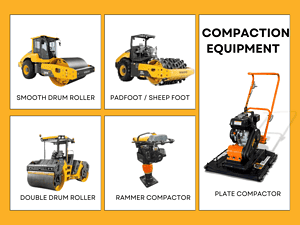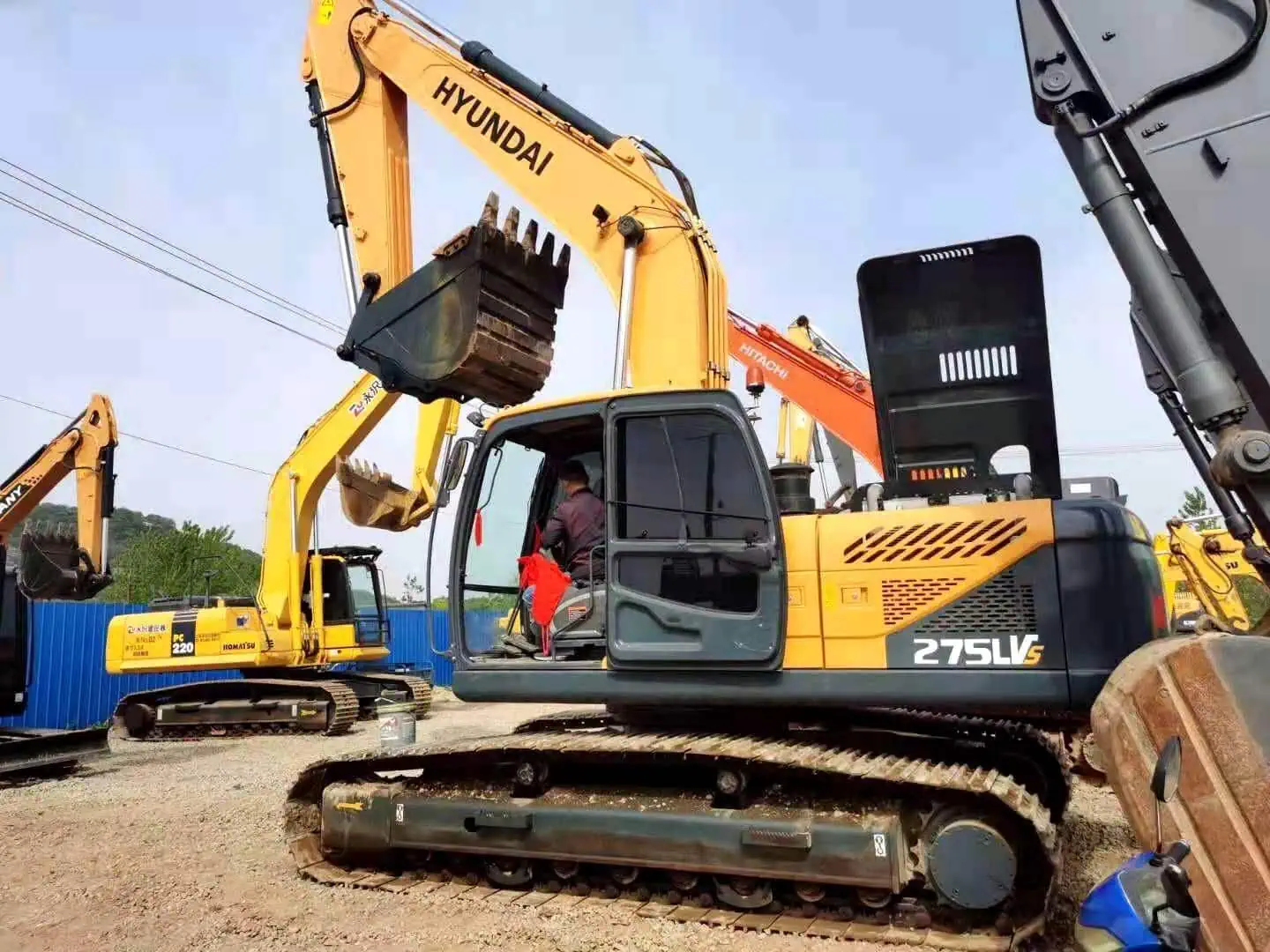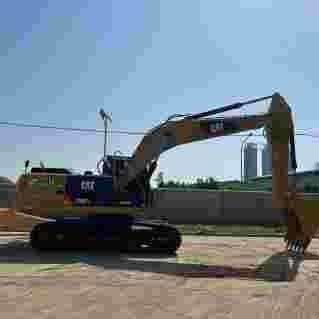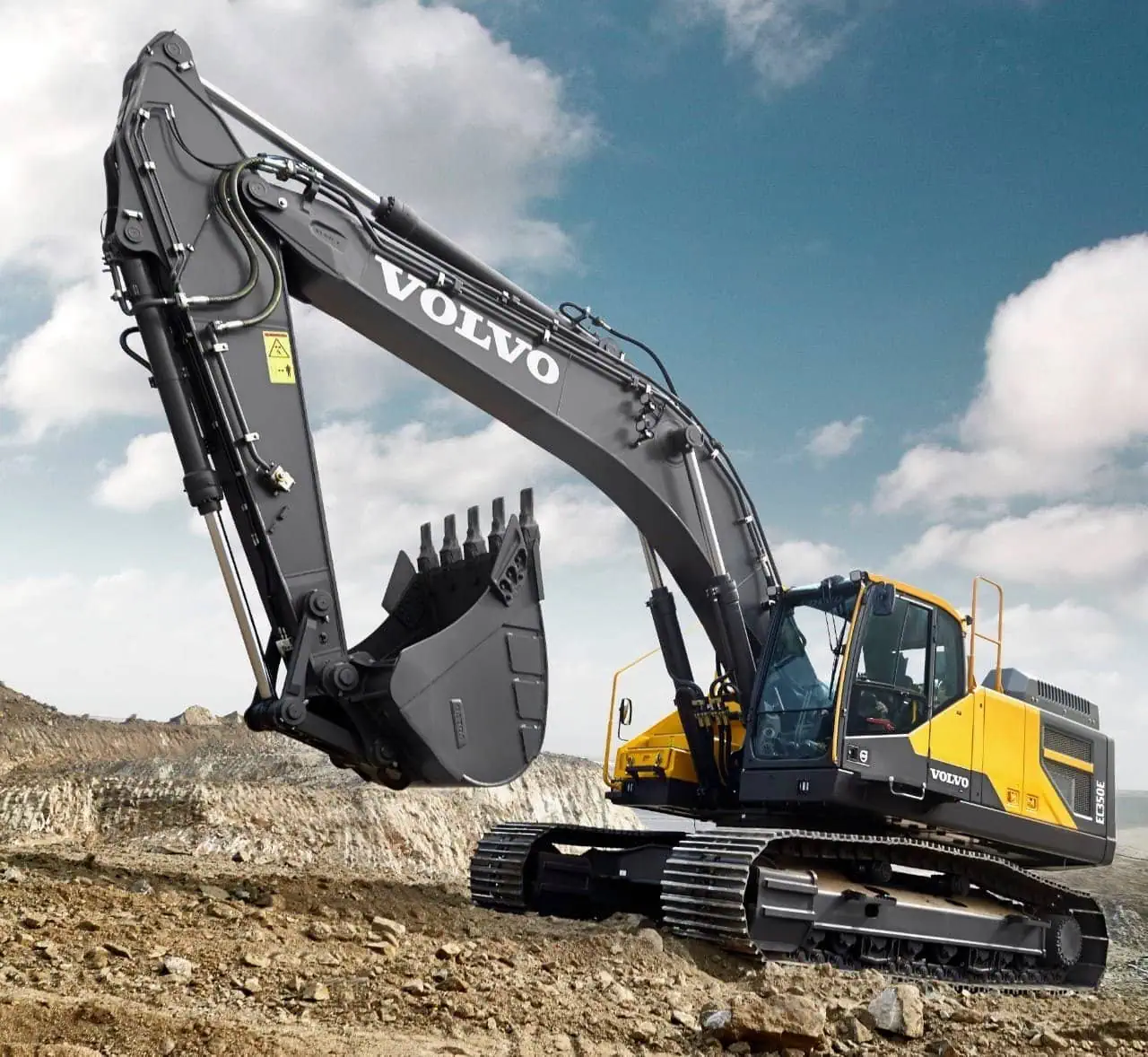Your Caterpillar loader suddenly broke down during construction? Because its parts were worn out and needed to be replaced? What should you do at this time? There are a wide variety of spare parts on the Internet, and the prices are different. You don’t know how to choose. Many people have this problem. This article will explain the solution in detail to answer your problem.
Finding spare parts for Caterpillar loaders has never been easier, thanks to Caterpillar’s extensive dealer network and online platforms. Whether you need genuine OEM parts or are exploring aftermarket and used options, there are plenty of sources available to meet your needs. Knowing where to look and understanding the different options will ensure you get the right parts at the right price.
Let me tell you where and how you can source these Chargeur de chenilles spare parts effectively.

Table des matières
BasculerWhy Caterpillar Loaders Are in High Demand
Caterpillar is one of the most recognized names in the construction and mining industry, known for their durable and high-performance machinery. Caterpillar loaders are known for being able to work in tough environments, which is why construction companies, contractors, and users of heavy equipment trust them all over the world.
Reasons for High Demand:
Durability: Caterpillar loaders are known for their ability to withstand harsh conditions, ensuring long-term reliability.
Versatility: Caterpillar loaders come in various sizes and configurations, making them suitable for a wide range of applications, from road construction to mining.
Global Dealer Network: Caterpillar’s vast dealer network ensures that parts are always within reach, minimizing downtime.
High Resale Value: Due to their reputation and high demand, Caterpillar loaders have a higher resale value compared to other brands.
| Marque | Key Features | Why Choose Caterpillar? |
|---|---|---|
| Chenille | Powerful engines, efficient hydraulics, versatile designs | Proven performance, global service network |
| Komatsu | Fuel-efficient, technologically advanced | Suitable for diverse applications |
| Volvo | Strong in operator comfort and fuel economy | Focus on eco-friendly solutions |
Caterpillar loaders are big and heavy, and the soft ground of a typical landfill can be difficult to maneuver. The weight of the loader can lead to compaction issues when trying to traverse muddy areas. Moreover, landfill operations are often in remote areas where there is little assistance or close access to help if the equipment gets stuck in the mud.
Despite these challenges, Caterpillar loaders are often the top choice for landfill operations. Why? Because the larger size, greater weight, and deeper tread of this equipment allow them to navigate through conditions and surfaces that smaller, lighter competitive units cannot. As with every answer, there are exceptions, but it is common to find Cat compactors and loaders at work in municipal and

Ease of Finding Spare Parts for Caterpillar Loaders
Another benefit of owning a Caterpillar loader is the availability of support and expertise provided by their dealers and service technicians. With their extensive training and resources, these professionals can help you troubleshoot issues, perform regular maintenance, and get the most out of your equipment. Additionally, Caterpillar offers a range of warranty options and extended protection plans to give you peace of mind and protect your investment.
Sources of Spare Parts for Caterpillar Loaders
You can source spare parts for Caterpillar loaders through several channels:
| Channel | Avantages | Disadvantages |
|---|---|---|
| Authorized Dealers | Access to OEM parts, expert advice, worldwide service | Typically more expensive than other sources |
| Online Marketplaces | Convenient, wide selection, potential for discounts | Risk of receiving counterfeit or incompatible parts |
| Used Parts | Lower cost, available for older models | Quality and warranty concerns |
Regardless of the type of Caterpillar component or part you need, it’s likely that the company makes, sells, and services it. From basic filter to engine components, transmission parts, hydraulic system elements, electrical components, tires, tracks, and more, Caterpillar has you covered. You can purchase these parts from a variety of sources including:
- Authorized Dealers: Caterpillar dealers are spread globally, offering original equipment manufacturer (OEM) parts that ensure your loader’s performance and compatibility.
- Online Marketplaces: Platforms such as Caterpillar’s official website and third-party websites like eBay offer access to a wide range of parts, both new and used.
- Used Parts: For budget-conscious buyers, used parts can be a viable option, though it’s important to verify their quality before purchasing.
| Authorized Dealers | Online Marketplaces | Used Parts |
|---|---|---|
| Guarantee of quality and fit | Wide selection, often discounted | Cost-effective, especially for older machines |
| Expert guidance from professionals | Convenience, global access | Risk of receiving poor-quality parts |
| Premium prices, often higher than aftermarket parts | Risk of counterfeit parts | May lack warranty or return options |
Always an authorized Caterpillar dealer is the best option, but online platforms, and used parts can be a more cost-effective and flexible solution.
Types of Spare Parts for Caterpillar Loaders
Understanding the types of spare parts for Caterpillar loaders you might need is crucial to maintaining the longevity and efficiency of your equipment. Here are some of the most commonly replaced parts:
| Partie | Function | Fréquence de remplacement |
|---|---|---|
| Engine Components | Vital for power generation and efficiency | Every 2-3 years or as needed |
| Hydraulic Systems | Control the movement of the loader arms and attachments | Every 3-5 years |
| Undercarriage | Supports the weight of the machine, providing stability | Every 5-7 years |
| Transmission | Transfers power from the engine to the wheels | Every 3-5 years |
In all these cases and more, being able to quickly find and order the necessary parts is essential. The faster you can get your loader back up and running at peak performance, the sooner you can complete your project.
OEM Parts vs. Aftermarket Parts
If you are debating whether to choose genuine OEM parts or aftermarket parts for your Caterpillar loader, it ultimately comes down to the kind of performance and reliability you want. OEM parts are designed and manufactured to Caterpillar’s strict quality standards, ensuring that they will fit correctly and deliver the intended performance in your equipment.
| Part Type | Avantages | Disadvantages |
|---|---|---|
| OEM Parts | Higher quality, better durability, perfect fit | Generally more expensive |
| Aftermarket Parts | Lower cost, more options available | Quality can vary, risk of incompatibility |
It’s important to note that genuine Caterpillar parts are built to the specific specifications of your loader, providing the best performance and fewer maintenance issues over time.
| Comparison | OEM Parts | Aftermarket Parts |
|---|---|---|
| Quality | Guaranteed high quality, perfect fit | Quality can vary, sometimes inferior |
| Price | Higher cost | More affordable options |
| Availability | Always available through authorized dealers | Wide range but may lack stock |

How to Find Spare Parts for Your Caterpillar Loader
The advantage here is simplicity. Whether you’re ordering from a dealer in person, over the phone, via email, or through their website, it’s a straightforward process. All you need to do is tell them what you want and where to send it.
| Method | Avantages | Considerations |
|---|---|---|
| Authorized Dealers | Guaranteed genuine parts, expert advice, global network | Higher cost, but ensures quality and compatibility |
| Online Marketplaces | Convenience, potential for lower prices | Risk of counterfeit parts, varying reliability |
| Used Parts | Cost-effective, often available for older machines | Requires careful inspection for quality |
When you buy parts through your Caterpillar dealer, you can be certain they meet the high standards of the brand. And if you have any questions about how to install it or how to use it, these folks give you advice on the proper way to do it.
Factors Affecting the Availability of Spare Parts
Several factors can influence the availability of spare parts for Caterpillar loaders:
Model and Age of the Loader
For a newer model loader, a lot of parts are going to be easy to find. For older models, you might have to do a little homework to track down the rare parts and are likely going to have to order certain parts from specific suppliers.
| Loader Model | Availability of Spare Parts | Problèmes communs |
|---|---|---|
| Newer Models | High availability, quick access to OEM parts | Fewer issues, easily found parts |
| Older Models | May require custom orders or used parts | Higher risk of part obsolescence |
Geographical Location
The relationship with your dealer is strong. It’s the dealers who help you become profitable and remain profitable by keeping your equipment up and running. The closer you are to a dealer with parts, the better off you are. If it’s an emergency, and your machine is down, you could be two days out if you are not near a parts depot.
| Location | Ease of Access to Spare Parts | Potential Delays |
|---|---|---|
| Urban Areas | Quick access to dealers, parts availability is high | Minimal delays |
| Remote Areas | Limited access to dealers, need for international shipping | Longer shipping times, higher costs |
Specialized Parts
Other times, specialized parts might be custom-made hydraulic components that take extra time to design, manufacture, or are simply not in stock for eons.
| Part Type | Availability | Lead Time |
|---|---|---|
| Standard Parts | Readily available from authorized dealers | Short lead time |
| Specialized Parts | May require custom fabrication or special ordering | Longer lead time, potential for delays |
Costs of Caterpillar Loader Spare Parts
Le cost of spare parts for Caterpillar loaders can vary widely, depending on whether you’re choosing OEM parts (Original Equipment Manufacturer) or aftermarket parts. Understanding the price range and factors that affect these costs will help you make an informed decision when budgeting for maintenance and repairs.
OEM Parts vs. Aftermarket Parts
OEM parts usually have the highest quality and are fully compatible with Caterpillar equipment, but they are also the most expensive. Aftermarket parts are those that are made by other manufacturers and can vary greatly in quality, warranty, and fit. Aftermarket parts are generally less expensive than Cat or OEM, but that is not always the case.
Factors Affecting the Cost of Parts
- Brand and Manufacturer: OEM parts tend to be more expensive, as they are directly from Caterpillar. Aftermarket parts’ prices vary widely depending on the brand and manufacturer.
- Rarity of the Part: Certain parts, especially those for older models, may be harder to find, which can drive up their cost.
- Part Type: The complexity of the part plays a significant role in pricing. Major components like engines or transmissions will be far more expensive than smaller parts like filters or hoses.
- Quality of Aftermarket Parts: The quality of aftermarket parts can vary depending on the manufacturer. Some manufacturers offer high-quality parts that are almost identical to OEM, while others provide budget options that may not last as long.
Price Ranges for Different Types of Parts
| Part Type | Cost Range | Factors Influencing Cost |
|---|---|---|
| OEM Parts | $100 – $10,000+ | Brand, rarity, complexity, and part type |
| Aftermarket Parts | $50 – $8,000 | Quality, manufacturer, availability, and part type |
OEM parts are generally the best long-term investment due to their overall quality, reliability, and performance. However, the initial upfront costs can sometimes be substantial for these parts, especially when factoring in the smaller screen printers or shops trying to keep their maintenance costs down.
Aftermarket parts are typically the cheapest. They can be an excellent way to save money on your repair costs; however, at some point, you have to consider if you’d be okay with a part not performing as well or only lasting for a shorter duration. That’s not to say all aftermarket parts are this way, but you have to balance cost savings with potential issues down the road.
Tips for Maintaining Your Caterpillar Loader to Minimize Spare Parts Needs
Regular maintenance is the key to minimizing spare parts for Caterpillar loaders and extending the life of your equipment. If you maintain your loader, it will take care of you. It will operate efficiently, and you will avoid unexpected downtime with the machine. By staying on top of regular maintenance, you can find potential problems before they become expensive repairs.
Preventive Maintenance: A Critical Strategy
Preventative maintenance should be part of your routine to catch wear and tear early. By changing components on your loader at prescribed intervals, you can avoid costly repairs and downtime. Here are some of the most important maintenance items that will help you avoid spare parts:
Oil and Filter Changes: Regularly changing the engine oil and filters can help you avoid excessive wear on the engine. Without good lubrication, the internal components can overheat and wear out quickly, leading to expensive repairs.
Hydraulic System Checks: Ensuring your hydraulic system is working properly is critical to maintaining your loader’s overall performance. Low fluid or poor quality fluid in your system can lead to a failure and expensive repairs or replacement of hydraulic components.
Undercarriage Inspections: The undercarriage of your loader is one of the most critical and expensive parts of your machine to repair. Regular inspections and maintenance, including cleaning and lubricating, can help extend the life of your undercarriage and reduce expensive repairs.
Maintenance Schedule for Caterpillar Loader
| Maintenance Task | Fréquence recommandée | Purpose |
|---|---|---|
| Oil and Filter Change | Every 250 hours or 3 months | Prevents engine wear, reduces internal friction |
| Hydraulic System Check | Every 500 hours | Ensures proper fluid levels, prevents pump damage |
| Undercarriage Inspection | Every 500 hours | Checks for wear, ensures operational efficiency |
By sticking to your maintenance schedules, you can avoid problems with your loader that would require expensive spare parts or repair. Additionally, by doing your maintenance, you will keep your loader running as efficiently as possible, which will save you money on fuel and keep you more productive.
Additional Tips to Maximize the Lifespan of Your Loader
- Operate Within Recommended Limits: Overloading your Caterpillar loader or working it beyond its rated capacity can cause premature wear and tear. Always follow the manufacturer’s guidelines for load limits and usage.
- Keep the Equipment Clean: Dirt, mud, and debris can damage sensitive components. Regularly wash the loader and clean the engine area to prevent dirt from getting into the hydraulic system or engine components.
- Monitor for Leaks: Hydraulic fluid and coolant leaks are common, but they can go unnoticed until they cause significant damage. Keep an eye out for leaks and repair them as soon as possible to avoid a major system failure.
- Check Tire Pressure: Incorrect tire pressure can lead to uneven tire wear and increased fuel consumption. Regularly check the tire pressure and adjust as necessary to keep your loader running efficiently.
The best way to avoid spending a lot of money on spare parts for your Caterpillar Loader is to do regular, proactive maintenance on it. You’re going to have parts wear out over time, but if you keep up on the regular maintenance, it’s going to be a long time between big repair jobs.
Conclusion
The cost of spare parts for Caterpillar loaders varies. The cost to buy spare parts for Caterpillar loaders depends on whether you’re buying OEM or aftermarket, how rare the part is, and how complicated the part is. If you buy the real, Caterpillar brand part, in the short-term, it’s more expensive. But in the long-term, you’re less likely to need to repair it often because the part you bought is of a higher quality. After-market parts can be a great lower cost solution, but you need to weigh the risks of quality and compatibility.
The role preventative maintenance plays in avoiding spending money on spare parts is crucial. Regular oil changes, making sure your hydraulic system is working correctly, and watching your undercarriage and tracks can all help you avoid big bills for spare parts. If you can work these things into your routine to stay ahead of the wear and tear on your loader, you’re going to be proactive and won’t have to be reactive.
Keep it maintained and your Chargeur de chenilles can be your buddy for a long time, helping you avoid unexpected downtime and costly repairs.
Suivez-nous sur:Youtube.










